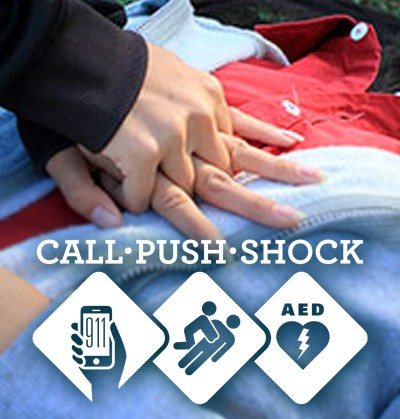
MADRID, Spain - Efforts to reduce the number of sudden cardiac deaths (SCD) in Europe are hampered by a lack of reliable data on the incidence of sudden cardiac arrest.
"SCD has been neglected for the past five to 10 years, as atrial fibrillation has become so much more popular, but we should talk more about this topic. The biggest problem with regard to working out the size of the problem in sudden cardiac death is that we have practically no data at all in Europe," Dr John Camm (St George's Hospital, London, UK) explained Sunday here at the EUROPACE 2011 conference. Acquiring better data on sudden cardiac death is "important because we know that many sudden cardiac deaths are treatable. So if we can identify them and treat them we can save lives, and that's the real importance of knowing this information," Camm said.
"Until you find out how prevalent this condition is—what age groups it occurs in and which gender it occurs in, and so on, then you can't get close enough to know who to put [implantable defibrillators] in." He referred to data presented during the same EUROPACE 2011 session by Dr Karl-Heinz Kuck (Asklepios Klinik, Hamburg, Germany) showing that the current primary-prevention implantable-cardioverter-defibrillator (ICD) population that has received so much attention in recent years is only one part of a larger population at risk of SCD.
Kuck cited data from the seminal Maastricht study that showed that, during the 1990s in the Netherlands, 45% of SCD sufferers had no known history of cardiac disease, 40% had low or medium risk profiles following an MI, and only 13% had a low ventricular ejection fraction. That study showed that the incidence of SCD was almost exactly one per 1,000 patient-years. It also showed that men are more than twice as likely as women to suffer sudden cardiac death, that it usually happens when the patient is at home—often when they are asleep—and although resuscitation is attempted in about 50% of cases, it succeeds in only about 6% of them.
But Camm pointed out that more recent data from the Netherlands shows the overall rate of SCD has dipped just below one per 1,000 patient-years as medical and ICD therapy has improved. This is consistent with a number of smaller studies in several European countries that suggest the overall rate of SCD in Europe is trending downward and is now around 0.8 per 1,000 patient-years. Eastern European countries tend to have higher SCD rates than those of Western Europe. However, although the overall rate of sudden cardiac death is declining, the SCD rate among young people appears to be staying flat, around 0.6/100,000 person-years, Camm observed. He cited the research by Dr Domenico Corrado (University of Padua Medical School, Italy) et al in Italy as evidence that ECG screening in young athletes could push this rate down even further, but not every athlete screening program has had so much success.
How does Europe compare with the U.S.? Given the overall similarity in cardiovascular risk profiles of the European and North American population, the rate of sudden cardiac death in Europe is likely similar to that of North America, Camm said. But that assumption does not help estimate the SCD risk in Europe, because the true incidence of sudden cardiac death in the US is also unclear. Repeatedly cited estimates produced over the past 30 years range from 180,000 to over 450,000 annually, according to a recent meta-analysis by the US-based Sudden Cardiac Arrest Thought Leadership Alliance's (SCATLA) think tank, Camm said. SCATLA concluded "the true incidence of sudden cardiac arrest and/or SCD in the US remains unclear, with a wide range in the available estimates that are badly dated."
Treatment of SCD also varies widely in the U.S. Camm cited a 2008 report from the Resuscitation Outcomes Consortium (ROC) that found that survival of emergency-medical-services-treated cardiac arrest varies by geography from 3.0% to 16.3%. The SCATLA group found that the various studies on the risk of sudden cardiac death use different definitions. For example, some of the studies are restricted to patients with coronary disease, some include only SCDs that are witnessed, and some of the studies counted only SCD patients in a certain age group.
"As reliable estimates of SCD incidence are important for improving risk stratification and prevention, future efforts are clearly needed to establish uniform definitions of [sudden cardiac arrest] and SCD and then to prospectively and precisely capture cases of [sudden cardiac arrest] and SCD in the overall U.S. population," SCATLA concludes. "There hasn't been a requirement for an international, pan-European concept in Europe, although various countries have made efforts in this regard." Therefore, Camm hopes the European Society of Cardiology can lead an effort like the one in the U.S. to get more accurate numbers on sudden cardiac death for all of Europe. Camm commended SCATLA's call for "starting over" with larger multicenter prospective trials using the standardized definitions in the professional guidelines and integrating data from multiple sources to better estimate the risk of SCD. "It remains a difficult problem, but systematic methodology and systematic definitions will certainly help," Camm said.
SOURCE: Reed Miller, theheart.org
